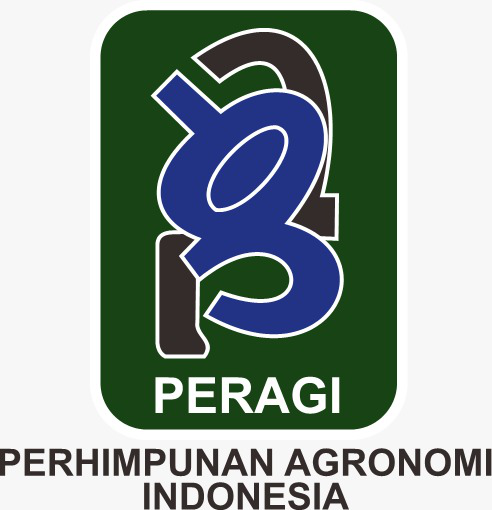Isolation and Identification of Endophytic Fungi in Cocoa Seedlings (Theobroma cacao L.)
Abstract
Endophytic fungi are organisms that infect healthy plant tissue without causing visible symptoms. This study aimed to determine the presence of endophytic fungi in cocoa plants following the application of boron and sodium hypochlorite. The research was conducted at the Screen House of the Faculty of Agriculture at Hasanuddin University and continued at the Disease Laboratory within the Department of Pest and Plant Disease Science, also at Hasanuddin University, from October 6, 2013, to March 15, 2014. Boron was applied to the plants in three treatments: Treatment A received 1 gram of boron, Treatment B received 0.5 grams of boron, and Treatment C served as the control group with no boron applied. Additionally, the plants were treated with sodium hypochlorite, which was sterilized for 5 minutes before the identification process to characterize the fungi. The results indicated that three genera of endophytic fungi were isolated from the cocoa plant stems following the application of boron: Aspergillus sp., Trichoderma sp., and Colletotrichum sp. Furthermore, one endophytic fungus, Rhizoctonia sp., was isolated from the cocoa stems after applying sodium hypochlorite.
Downloads
References
Azhari, Putri Reza.2008.Peningkatan Kualitas Anthurium Hookeri Melalui Pemberian Unsur Boron (B).Fakultas Pertanian Universitas Sebelas Maret.
Barnett, H.C. and B. B. Hunter, 1972. Illustrated Genera of Imperfect Cendawan. Burgest Company. 126 p
Carr, M. K. V., & Lockwood, G. (2011). The water relations and irrigation requirements of cocoa (Theobroma cacao L.): a review. Experimental agriculture, 47(4), 653-676.
Degryse, F. (2017). Boron fertilizers: use, challenges and the benefit of slow-release sources–a review. Journal of Boron, 2(3), 111-122.
Fitria, Ramadhan.2012. Cendawan Endofit sebagai Pengendali Hayati. Macro Bio Student.blogspot.com/2012/10/Cendawan-endofit-sebagai-pengendali.html.diakses tanggal 1 Maret 2014.
Hanada et al. R.e.2010.Endophytic Fungal Diversity in Theobroma cacao and T.grandiflorum Trees an Their Potential for Growth Promotion and Biocontrol of Black-pod Disease. Elsevier. Fungal Biology 114(2010) 90I-90I.
Lakitan, B. 2007. Dasar-Dasar Fisiologi Tumbuhan. PT. Raja Grafindo Perkasa.
Jakarta.
Pusat Penelitian Kopi dan Kakao Indonesia.2010.Buku Pintar Budi Daya Kakao. Agromedia Pustaka: Jember Jawa Timur.
Ridho Pratomo 2006, Pengaruh Macam, PH, dan Penggoyangan Media, Terhadap Pertumbuhan Cendawan Rhizoctonia sp. Program Studi Budidaya Hutan Fakultas Kehutanan Institut Pertanian Bogor.(skripsi)
Sriwati, Rina.dkk.2012. Pengaruh Cairan Perasan Beberapa Jenis Daun Terhadap Pertumbuhan Cendawan Endofit Trichoderma sp Secara Invitro. Penelitian Dosen dan Mahasiswa di Bidang Pertanian,ISSN 1907-2689. Jurnal Floratek. Vol 7 No.2.
Syukur, A. 2005. Penyerapan Boron Oleh Tanaman Jagung di Pantai Bugel Dalam Kaitannya Dengan Tingkat Frekuensi Penyiraman dan Pemberian Bahan Organik. J. Ilmu Tanah dan Lingkungan. 5(2).
Copyright (c) 2025 Sepsriyanti Kannapadang, Dewi Fitrianti

This work is licensed under a Creative Commons Attribution 4.0 International License.
Authors who publish with Jurnal Agronomi Tanaman Tropika (JUATIKA) agree to the following terms:
Authors retain copyright and grant the Jurnal Agronomi Tanaman Tropika (JUATIKA) right of first publication with the work simultaneously licensed under a Creative Commons Attribution License (CC BY 4.0) that allows others to share (copy and redistribute the material in any medium or format) and adapt (remix, transform, and build upon the material for any purpose, even commercially) with an acknowledgment of the work's authorship and initial publication in Jurnal Agronomi Tanaman Tropika (JUATIKA).
Authors are able to enter into separate, additional contractual arrangements for the non-exclusive distribution of the journal's published version of the work (e.g., post it to an institutional repository or publish it in a book), with an acknowledgment of its initial publication in Jurnal Agronomi Tanaman Tropika (JUATIKA). Authors are permitted and encouraged to post their work online (e.g., in institutional repositories or on their website) prior to and during the submission process, as it can lead to productive exchanges, as well as earlier and greater citation of published work.







 More Information
More Information



